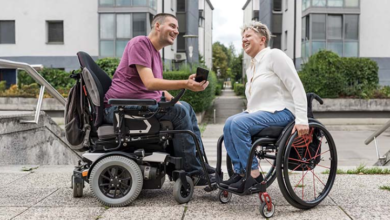Differences Between Independent Living, Supported Living, And Group Homes

Choosing the right living arrangement is one of the most important decisions for people with disabilities who want to enjoy greater autonomy and quality of life. Each option, independent living, supported living, and group homes, offers unique advantages depending on the level of support, independence, and community involvement a person desires. Understanding these differences helps individuals, families, and caregivers make informed choices that align with personal goals and support needs.
In exploring these options, many people find that independent living Ipswich–style models, which focus on empowerment, accessibility, and choice, offer a strong foundation for long-term wellbeing and fulfillment.
Independent Living
Independent living refers to a housing and support model designed for individuals who can manage most aspects of daily life independently but may still benefit from accessible environments or occasional assistance. The core focus is on autonomy, privacy, and self-direction.
Residents in independent living arrangements often live in private apartments, units, or small homes within a community that provides shared amenities or optional services such as cleaning, maintenance, and social activities. These settings are particularly well-suited for people who value control over their routines but appreciate the reassurance that help is available if needed.
The main goal of independent living is to promote confidence and self-sufficiency. Support might include skill-building in budgeting, cooking, or transportation, as well as access to community programs that encourage social participation. Individuals in these settings are encouraged to make their own choices—about employment, education, and leisure—while maintaining a sense of belonging to the community.
Independent living is ideal for people who have developed strong daily living skills, need minimal assistance, and want an environment that supports inclusion and independence.
See also: From Photos to Emails: Recognizing the Signs of Digital Hoarding
Supported Living
Supported living offers a more flexible approach for people who need ongoing assistance but still want to live in their own home or a shared environment rather than in an institutional or heavily supervised setting.
In supported living arrangements, individuals may rent or own their homes while receiving personalized support services tailored to their specific needs. These supports can include assistance with personal care, medication management, meal preparation, transportation, and community engagement. The level of support can range from a few hours per week to 24-hour assistance, depending on the individual’s requirements.
The supported living model emphasizes choice and control. The individual decides who will provide their care, how it will be delivered, and when it will occur. This approach promotes independence while ensuring safety and stability. It allows people to develop essential life skills while receiving support in areas where it is needed most.
Supported living also fosters inclusion by encouraging individuals to participate fully in their communities—whether through volunteering, work, or social activities. This balance between freedom and structured support creates a strong foundation for personal growth and community integration.
Group Homes
Group homes (also known as shared accommodation or residential care homes) provide a more structured and communal environment. They are typically designed for individuals who require significant daily support due to physical, cognitive, or developmental disabilities.
In a group home, several residents live together under the supervision of trained support staff. Assistance is provided for all aspects of daily living, including meals, hygiene, medication, and transportation. The setting fosters companionship and safety while ensuring that each resident’s medical and personal needs are met.
While group homes can limit some aspects of personal independence, they provide essential stability and around-the-clock care. Many group homes today are adopting more person-centered approaches that encourage residents to participate in decisions about their routines, meals, and recreational activities, helping maintain a sense of agency within a supportive environment.
Group homes are especially beneficial for individuals who need continuous supervision but still value community living and social connection.
Choosing the Right Option
Selecting between independent living, supported living, and group homes depends on the individual’s abilities, goals, and preferred lifestyle.
- Those who thrive with minimal supervision and enjoy self-reliance may find independent living most suitable.
- People who need consistent but adaptable assistance often benefit from supported living arrangements.
- Individuals requiring comprehensive care and supervision may find comfort and safety in a group home environment.
Family involvement, funding availability, and personal aspirations also play crucial roles in this decision-making process. Consulting with disability service providers, healthcare professionals, and advocates can help ensure the chosen living arrangement matches both current and future needs.
Ultimately, the goal of any living arrangement—whether independent, supported, or communal—is to empower individuals to live meaningful, self-directed lives. By understanding these distinctions, people can make choices that foster growth, dignity, and inclusion.
For those exploring their options, models similar to independent living Ipswich approaches highlight how accessible design, compassionate support, and community participation can work together to create fulfilling and empowered lives for people with disabilities.
Families can make informed decisions to embark on this rewarding journey.


